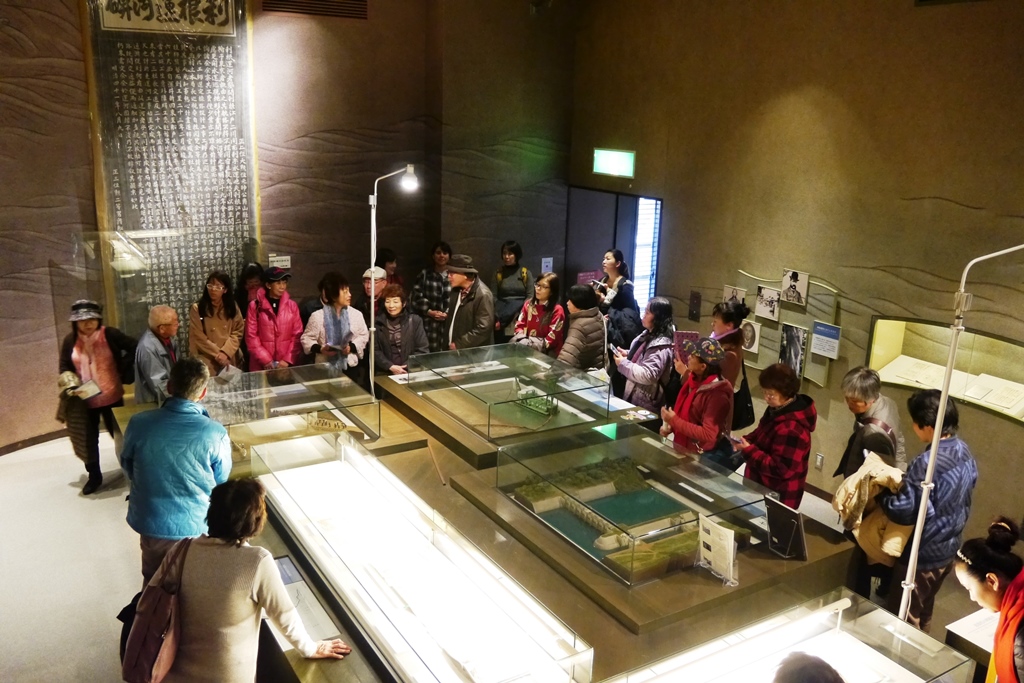
31 people (including 14 foreign nationals and 4 AIRA staffs) took part in this tour.
14 foreigners are all students learning Japanese at AIRA’s Japanese Language Class.
They are from Korea, China, Vietnam, Peru and Malaysia.
It was a fine, chilly morning, nevertheless all the participants got together at 8:00AM sharp on December 7, and the bus departed from Abiko at 8:15 for today’s destinations.
On the bus Ms. Toshiko Matsuki gave us a welcome address on behalf of the organizers, and gave an explanation on destinations and other points of interests near-by.
Then, self-introduction was done by each participant so that friendly mood and atmosphere would be created among all the members on the bus.
The first place to visit was Glicopia Chiba, (Glico’s first Ice cream factory open to the public viewing) which was just inaugurated in July this year, attracting many visitors since its opening. This facility has been very popular because they accept factory-tours for visitors and provides them with a chance of free tasting of ice cream they produce here. Being fully automated and 24 hours un-manned operation, it gave us a great chance of looking at the leading-edge production line through the see-through glass wall. At the end of the tour, there was the room in which we could get in and experience room temperature of 10 degrees Celsius below zero. In the facility, they also open the gift shops so that visitors can purchase confectionery items produced in this factory. There are some limited items sold only and exclusively in these shops. Some participants bought confectionery and other goods they wanted to bring back as souvenirs for their family members.
We took lunch at an Italian restaurant near-by. Due to such a big tour group the orders were already placed in advance for the choice of 4 different spaghetti .
As it was really a nice fancy restaurant with sunlight pouring through the window, we really enjoyed not only main food, spaghetti, but also a glass of wine and a set of cakes attached to main dish. Those who chose the wine liked it very much and had a second one as well. It was such a lovely and comfortable lunch time.
Our next stop was Sekiyado-Jo Museum, which is the one run and managed by Chiba Prefecture. The Museum is located in the northern extremity of Chiba Prefecture, and is standing on the border between Saitama and Ibaragi Pref. Sekiyado is the town where two big rivers, the Edogawa River and the Tone River join to run through down to Tokyo(Edo), and therefore has played a very important role in terms of water-transport ever since the Edo period.
This is why Edo Tokugawa Shogunate chose Sekiyado to install the regional government office and turned it to one of the strategic positions for them.
During the tour to Sekiyado- Jo Museum, Mr. Takeo Uehara kindly volunteered to show us around as a tour guide. Mr. Uehara, who was born and brought up here, has been so familiarized with this area including its history, culture, town development and so on. According to him, the Tone River was enlarged long time ago, and widened in full scale in order to upgrade the capacity of water-transport down to Tokyo (then, Edo) . The story was very impressive and persuasive.
From the observatory (Top floor of the Castle), an extensive beautiful view toward Tone, Edogawa Rivers and all the way to the Kanto Plains was observed.
Mr. Uehara also revealed an unknown story, that is, Sekiyado –Jo Museum has lots to do with the purification project of Abiko’s Teganuma Marsh, which makes us feel Sekiyado much closer to Abiko than before.
Upon completion of the tour at Sekiyado-Jo Museum, we got on the bus again, and on the way back made a brief stop at Michino- Eki shopping mall to do small shopping, and then finally returned back to Abiko as scheduled.
Everybody enjoyed this tour with lots of new experience and excitement, and agreed to see each other again in the next opportunity.
(Translated by Yukio Yoshida)











